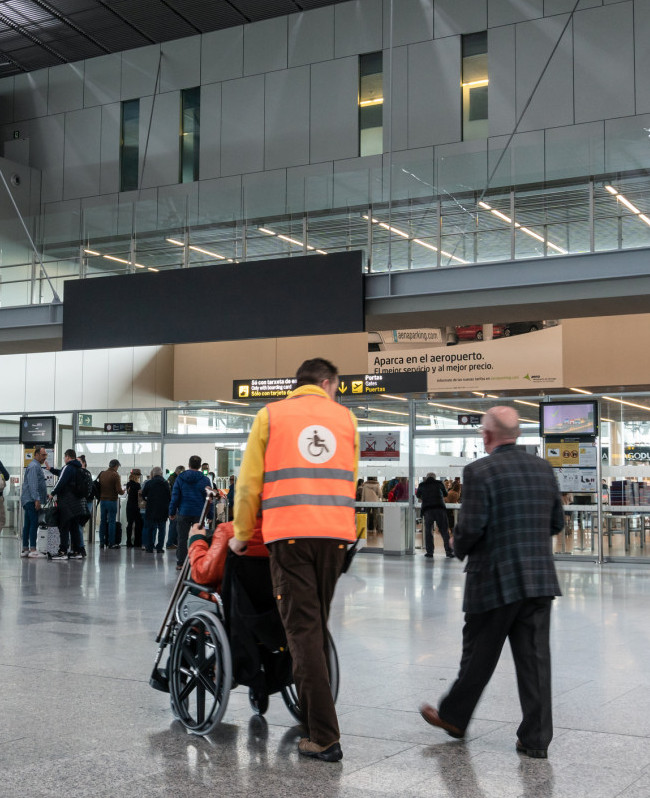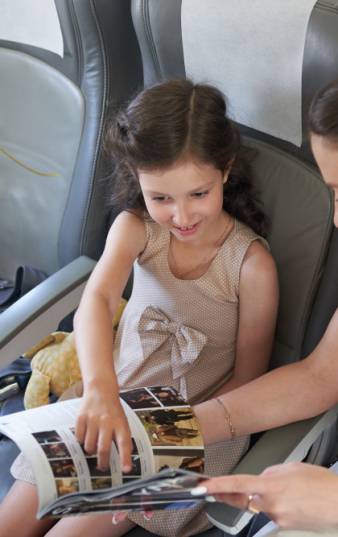REDUCED MOBILITY
Before the Flight
It is possible to travel with a wheelchair on SmartLynx Airlines' flights. No excess baggage charge is levied for a wheelchair. We require information about a passenger travelling with a wheelchair when the trip is booked so that we can properly anticipate the need to provide help at different stages of the journey.
SmartLynx Airlines will transport all equipment that a person with reduced mobility needs for their well-being, provided the passenger informs of such equipment at the time of trip reservation, and we are able to confirm that there is room for the equipment in the hold of the aircraft. Information about a passenger's need for assistance during their journey is conveyed through the reservation system to airline and airport staff.

SmartLynx Airlines require information about the need for special assistance at the latest 48 hours before the flight departure, so that we can ensure the availability of such assistance, if a passenger will require any of the following services:
- if the passenger has hearing or visual impairments and will require assistance;
- if the passenger cannot climb stairs;
- if the passenger cannot walk the distance between the check-in area and the departure gate, between gates when in transit, or from the gate to the arrival hall;
- if the passenger wishes to use a wheelchair or would like to be transported to the gate in their own wheelchair (manually powered wheelchairs only);
- if the passenger wishes to take along their own electric/battery-powered wheelchair;
- if the passenger is travelling with a certified service animal, such as a guide dog;
- if the passenger requires special care and/or medical equipment during the flight.
At the Airport
At check-in, it is a good idea to check that all of the information in the check-in system is correct. Missing information can be given, and wrong information can be corrected before the journey starts. Baggage, including the wheelchair, should be tagged with baggage labels.
Staff will assist the passenger from check-in to the aircraft if the passenger wishes such help.
The guiding rule is that the passenger should remain in the wheelchair for as long as possible, preferably up to the door of the aircraft, from where they will be assisted or carried in a lifting chair onto the aircraft. The passenger's own wheelchair will be stowed in the hold.
For safety reasons and due to the location of the lifts or stairs in the airport buildings, the wheelchair must be transferred down to the baggage hall at an earlier stage. In such cases, the passenger is often transferred to an airport wheelchair at check-in, and the passenger's own chair is taken at this stage into the baggage hall.
Passengers requiring special assistance are, as a rule, taken on to the aircraft before the other passengers, so that staff can help them in peace and quiet and check what assistance the passengers need during the flight without the other passengers overhearing what may be very personal matters. Thus it is advisable to arrive at the gate in advance, at the latest by the boarding time indicated on the boarding pass.
During the Flight
All medication required during the entire trip should be packed into carry-on baggage. If the passenger needs help in taking medication, eating, visiting the toilet, getting up or communicating in a way that differs from normal, they must be accompanied by a helper/assisting person, because in these instances, the airline cannot provide assistance during the flight, except for lifting help at the airport. It is also not possible for the crew to store passengers' medicines during the flight.
An effort is always made to arrange a seat according to the passenger's wishes. Passengers with reduced mobility cannot, however, be seated at emergency exits, nor can they obstruct the movement of the other passengers from their seats. Passengers with reduced mobility are assigned a seat in advance, which has an armrest that can be raised and is, wherever possible, next to the aisle to enable easier transfer to and from a wheelchair or lifting chair. If the aircraft is full, passengers with reduced mobility must sit in a window seat so that they do not obstruct the movement of the other passengers from their seats.
After the Flight
The departure airport sends a message to the destination so that the personnel there can come to meet and assist the passenger. Passengers with reduced mobility are helped from the aircraft last when there is more space to help, and assistance can be given in peace and quiet. Staff will help the passenger to the arrivals hall and to the person who is meeting them or to their next mode of transportation (connecting flight, taxi or bus).
Travelling as a Group
When several passengers who use wheelchairs are departing on the same flight, the receipt of advance information is even more important so that sufficient time and personnel can be allocated for special assistance at the various stages of the journey, and to ensure that there is definitely enough room in the hold of the aircraft for all of the wheelchairs.
Because of passenger safety, there is a specified number of passengers requiring special assistance that can be taken on to the same flight. If it is necessary to exceed this number of passengers, the total number of accompanying assistants, the precise nature of the need for assistance, and whether the aircraft can carry all of the wheelchairs, must be clarified.
